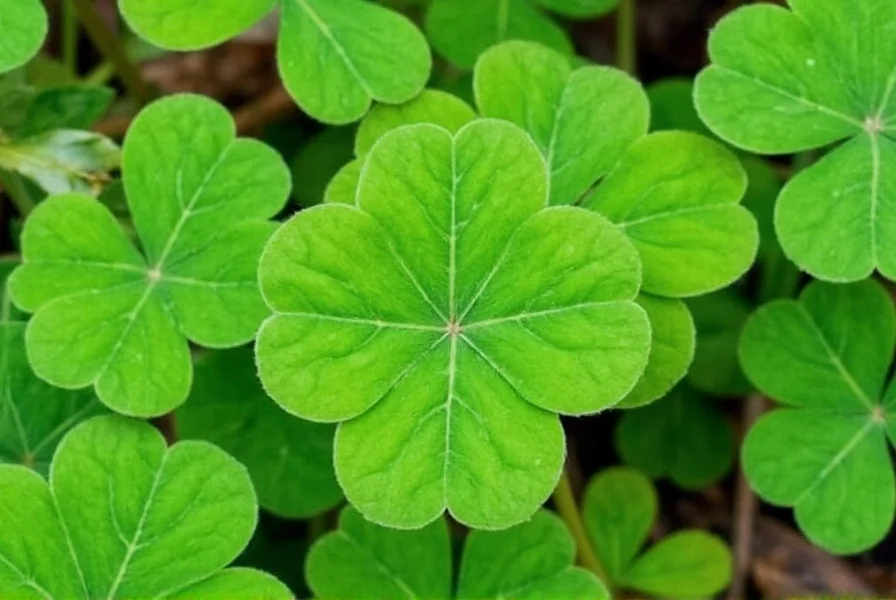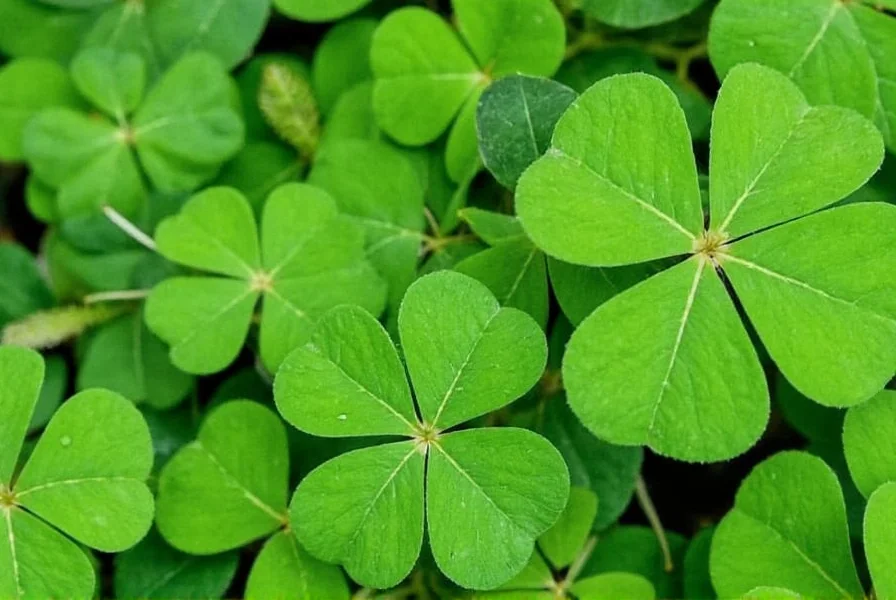Clover plants serve as valuable components in sustainable gardening and agricultural systems. Understanding their characteristics helps gardeners make informed decisions about whether to encourage or manage these resilient plants. This comprehensive guide explores clover varieties, growth habits, ecological benefits, and practical management strategies for home landscapes.
Understanding Clover Plant Characteristics
Clover identification begins with recognizing the distinctive trifoliate leaf structure—three leaflets arranged in a palmate pattern. While most clovers have this classic three-leaf configuration, the rare four-leaf variation has become a cultural symbol of good luck. The flowers form dense spherical or oval heads, ranging from white to pink to purple depending on the species.
As members of the Fabaceae family, clovers possess the remarkable ability to fix atmospheric nitrogen through symbiotic relationships with Rhizobium bacteria in their root nodules. This natural fertilization process enriches soil fertility, making clover an excellent green manure crop and valuable companion plant in permaculture systems.
Common Clover Varieties for Gardeners
While hundreds of clover species exist globally, several varieties are particularly relevant for North American and European gardeners. Each type offers unique benefits and growth characteristics suitable for different landscape applications.
| Species | Height | Flower Color | h>Best Growing ConditionsPrimary Uses | |
|---|---|---|---|---|
| White Clover (Trifolium repens) | 4-8 inches | White to pink | Full sun to partial shade, moist soil | Lawn alternative, ground cover, forage |
| Red Clover (Trifolium pratense) | 12-24 inches | Red-purple | Full sun, well-drained soil | Green manure, medicinal uses, pollinator habitat |
| Micro Clover (Trifolium repens var. Pirouette) | 3-6 inches | White | Full sun to partial shade | Lawn replacement, low-maintenance ground cover |
| Crimson Clover (Trifolium incarnatum) | 12-24 inches | Bright red | Full sun, sandy soil | Winter cover crop, ornamental |
Benefits of Incorporating Clover in Your Landscape
Gardeners increasingly recognize the ecological advantages of growing clover plants as alternatives to traditional turf grass. Understanding these benefits helps determine whether clover suits your specific landscape needs.
Nitrogen fixation represents clover's most significant contribution to soil health. Through their root nodules, clover plants convert atmospheric nitrogen into a form usable by other plants, reducing or eliminating the need for synthetic fertilizers. This natural process improves soil fertility while supporting neighboring plants.
Drought tolerance makes clover an excellent choice for water-conscious landscapes. Once established, most clover varieties require significantly less irrigation than traditional turf grasses. Their deep root systems access moisture unavailable to shallow-rooted grasses, maintaining green coverage during dry periods.
Pollinator support constitutes another critical ecological benefit. Clover flowers provide abundant nectar and pollen for bees, butterflies, and other beneficial insects. A single acre of blooming clover can support thousands of honeybees, making it valuable for both commercial apiaries and backyard pollinator gardens.

Managing Clover in Lawn Environments
Whether you're considering converting to a clover lawn or managing unwanted clover in existing turf, understanding proper techniques ensures success. Many homeowners now intentionally replace traditional grass with clover for its low-maintenance characteristics.
For those establishing a clover lawn alternative, prepare the soil by removing existing vegetation and loosening the top 2-3 inches of soil. Broadcast seed at a rate of 1 pound per 300 square feet, then lightly rake to ensure good seed-to-soil contact. Water regularly until established, then reduce irrigation as the plants mature. Micro clover varieties work particularly well for lawn replacement due to their low growth habit and reduced flowering.
Gardeners preferring traditional turf but dealing with unwanted clover growth should focus on cultural practices rather than immediate chemical solutions. Clover often indicates soil conditions favorable to its growth but less ideal for turf grass. Address underlying issues by:
- Improving soil fertility through proper nitrogen application
- Adjusting mowing height to 3-4 inches to shade out clover seedlings
- Watering deeply but less frequently to encourage deeper grass roots
- Overseeding thin areas with competitive grass varieties
Practical Growing Tips for Clover Success
Successful clover cultivation requires understanding specific needs for different applications. Whether growing clover as a cover crop, lawn alternative, or ornamental ground cover, these evidence-based practices yield optimal results.
Soil preparation significantly impacts clover establishment. While adaptable to various soil types, clovers perform best in slightly acidic to neutral soils (pH 6.0-7.0). Conduct a soil test before planting and amend accordingly. Incorporate organic matter to improve drainage in heavy soils or water retention in sandy soils.
Planting timing affects establishment success. In northern climates, late summer to early fall (August-September) provides ideal conditions with warm soil and adequate moisture. Southern regions benefit from fall planting (October-November) to avoid summer heat stress. Spring planting works but requires careful moisture management during summer establishment.
Maintenance requirements vary by application. Clover lawns need mowing only when flowering begins (every 3-6 weeks), significantly reducing maintenance compared to traditional turf. Avoid high-nitrogen fertilizers that promote grass competition. For medicinal or culinary uses, harvest red clover flowers when 40-60% have opened for maximum potency.
Addressing Common Clover Concerns
Several misconceptions surround clover plants, particularly regarding safety and maintenance. Evidence-based information helps gardeners make informed decisions.
Is clover safe for pets? Most clover varieties pose minimal risk to dogs and cats when consumed in moderation. However, excessive consumption may cause mild digestive upset. The greater concern involves commercial clover lawns treated with herbicides or fertilizers. Always verify any lawn treatments are pet-safe before allowing animals to graze.
Does clover attract pests? While clover attracts beneficial insects like bees, it generally doesn't increase problematic pest populations. In fact, clover lawns often have fewer insect problems than traditional turf due to greater biodiversity. The misconception about clover attracting ticks appears unfounded—research shows tick populations depend more on habitat structure than specific plant species.
Conclusion: Making Informed Clover Decisions
Clover plants offer valuable benefits for sustainable landscapes when properly understood and managed. Their nitrogen-fixing capabilities, drought tolerance, and pollinator support make them increasingly popular alternatives to resource-intensive turf grasses. By matching clover varieties to specific site conditions and management goals, gardeners can leverage these resilient plants to create more ecologically balanced outdoor spaces.
Whether you're considering converting to a clover lawn, managing existing clover growth, or incorporating clover into your crop rotation, understanding the specific characteristics and requirements of different varieties ensures successful implementation. The key lies in working with—rather than against—clover's natural tendencies to create landscapes that require fewer inputs while supporting greater biodiversity.
Frequently Asked Questions
How does clover fix nitrogen in soil?
Clover plants form symbiotic relationships with Rhizobium bacteria in specialized root nodules. These bacteria convert atmospheric nitrogen (N₂) into ammonia (NH₃), a plant-usable form of nitrogen. This natural fertilization process occurs continuously during the growing season, enriching soil fertility without synthetic inputs. The fixed nitrogen becomes available to neighboring plants when clover roots naturally die back or when the plant material decomposes.
Can clover replace traditional grass in lawns?
Yes, white clover and micro clover varieties make excellent grass alternatives for lawns. They require less mowing (only when flowering), need minimal fertilization due to nitrogen fixation, and tolerate moderate foot traffic. Clover lawns stay green during droughts better than traditional turf and provide valuable habitat for pollinators. Micro clover specifically has been bred for lawn use with smaller leaves, lower growth habit, and reduced flowering compared to standard white clover.
Why does clover grow well in poor soil conditions?
Clover thrives in nutrient-poor soils because of its nitrogen-fixing ability, which gives it a competitive advantage over plants requiring pre-existing soil nitrogen. Clover's deep taproot system accesses water and nutrients from deeper soil layers unavailable to shallow-rooted plants. Additionally, clover tolerates a wider pH range than many turf grasses and can grow in compacted soils where grass struggles. These adaptations make clover one of the first plants to colonize disturbed or depleted soils.
How do I control clover in my existing lawn without chemicals?
Effective non-chemical clover control focuses on creating conditions favoring grass over clover. Raise mowing height to 3-4 inches to shade clover seedlings, apply nitrogen fertilizer in fall to promote grass growth, water deeply but less frequently to encourage deeper grass roots, and overseed thin areas with competitive grass varieties. Improving overall lawn density through proper cultural practices gradually reduces clover presence without herbicides.
Are all clover varieties safe for foraging?
Most common clover varieties (white, red, and crimson) are safe for human consumption in moderation. However, some lesser-known species may contain compounds that cause digestive upset when consumed in large quantities. Always positively identify plants before foraging, and avoid harvesting from areas treated with pesticides or contaminated by pollutants. Red clover flowers are commonly used in herbal teas, while young clover leaves can be added to salads in small amounts.











 浙公网安备
33010002000092号
浙公网安备
33010002000092号 浙B2-20120091-4
浙B2-20120091-4